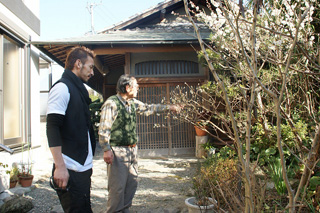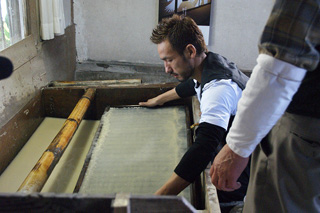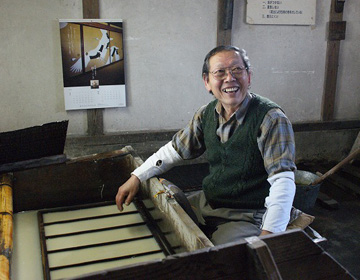 |
色褪せず、虫がつかない泥を入れて漉く和紙――、それが名塩(なじお)雁皮(がんぴ)紙。泥が混ざっているため丈夫で、年月を経ても色褪せず、虫がつかない。 |
No fading, no bugsNajio-gampi-shi is Japanese ”washi” paper that is made by mixing mud. Mud makes paper robust, keeps the original color for years, and repels insects. |
 |
 |
Production using mud and water of Najio“Takenobu Tanino was designated as a living national treasure in 2002. There are only two traditional ”washi” making workshops in Najio, which used to be known as the paper making village and called ”najio senken” (meaning a thousand workshops in Najio). The other workshops specialize in the production of paper for foil making. Therefore, Tanino’s workshop is the only one that makes all types of Najio-gampi-shi. In Najio, you can collect the unique mud of four different colors from the very hard bedrock. Mud is collected and filtered in a cotton bag. Only filtered fine mud is used for making paper, whose color depends on the shade of mud. Mud usually sinks in water. However, the mountain water of Najio helps mix pulp and water evenly. |
ACCESS
- Tanitoku Seishisyo
- Nishinomiya, Hyogo Prefecture
 Discovering Japan [Nihon] through authentic craftsmanship [Honmono]
Discovering Japan [Nihon] through authentic craftsmanship [Honmono]